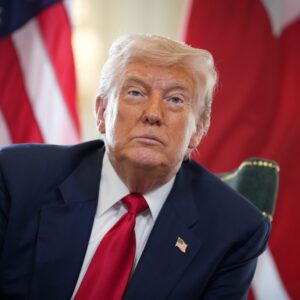In a nation already polarized by policy decisions and global uncertainties, a new executive proclamation has reignited one of America’s most contentious debates. It comes at a time of heightened concern about domestic security and increasing tension around immigration policy. The announcement was swift, firm, and left many people questioning what lies ahead for U.S. foreign relations and those hoping to enter the country.
The executive action, issued late in the evening and paired with a message to the American public, didn’t just impose a temporary hold—it outlined an outright ban affecting multiple nations. For others, it introduced partial restrictions. And behind the straightforward language of the order lies a complex web of political strategy, security claims, and fierce criticism.
The Details Behind the Ban: Who Is Barred from Entry?
As of June 9, 2025, the U.S. government will officially restrict entry for citizens from 12 specific countries, as outlined in a proclamation signed by President Donald Trump. These countries include:
Afghanistan
Myanmar
Chad
Republic of the Congo
Equatorial Guinea
Eritrea
Haiti
Iran
Libya
Somalia
Sudan
Yemen
For travelers and refugees from these countries, the message is clear: entry into the United States is effectively off-limits. Additionally, a further seven countries have been designated for partial restrictions, allowing for limited exceptions under defined circumstances:
Burundi
Cuba
Laos
Sierra Leone
Togo
Turkmenistan
Venezuela
Each of these nations now finds itself under intensified scrutiny as the U.S. government asserts the need for tighter vetting, increased control, and decisive measures to ensure the safety of the American people.
Afghanistan is one of the countries facing the travel ban (Qasim Mirzaie 500px/Getty stock images)
Afghanistan is one of the countries facing the travel ban (Qasim Mirzaie 500px/Getty stock images)
The Four Words Heard Around the World
In a video address shared via Truth Social, Trump delivered the most memorable and controversial line of the announcement with four stark words: “We don’t want ’em.” The phrase, referring to individuals from countries the administration deems high-risk, has since become symbolic of the broader tone and intent behind the policy.
In the same message, Trump cited a recent violent incident at a pro-Israel rally in Colorado, claiming it exemplified the dangers of admitting individuals who, in his words, “are not properly vetted.” Although the alleged perpetrator of that incident was an Egyptian national—ironically, a citizen of a country not included in the ban—the president used the example as justification for stricter border controls.
“We will not let what happened in Europe happen to America,” Trump declared, doubling down on the narrative that immigration, if unchecked, can lead to violence and chaos.
Security or Strategy? The President’s Justification
The administration’s official stance revolves around national security and the integrity of immigration screening. Trump’s proclamation states:
“I must act to protect the national security and national interest of the United States and its people.”
Citing the inability to reliably vet applicants from the banned countries due to their internal instability, lack of transparent governance, or absence of functional law enforcement systems, the White House argues the policy is preventive rather than punitive.
Critics, however, suggest that the measure is politically motivated—designed to appease Trump’s base and reinforce his administration’s identity as tough on immigration.
Who’s Still Allowed? The List of Exceptions
Despite the sweeping nature of the ban, the proclamation includes a set of exemptions. Certain individuals from the restricted countries may still gain entry under limited conditions. These include:
Athletes traveling to the U.S. for internationally recognized sporting events (e.g., the World Cup or Olympics)
Immigrant visa holders from religious and ethnic minorities facing persecution, particularly those from Iran
Afghan nationals with Special Immigrant Visas (SIVs)
Individuals holding lawful permanent resident status in the United States
Dual nationals whose second nationality is from a country not on the list
These exceptions, while notable, still represent a small subset of individuals compared to the broader populations affected.
The Backlash: Rights Groups Speak Out
Reactions to the travel ban have been swift and fierce, particularly from human rights organizations, immigration advocacy groups, and civil liberties watchdogs.
Amnesty International USA issued a sharp rebuke, calling the ban:
“Discriminatory, racist, and downright cruel.”
In their public statement, the organization accused the policy of promoting disinformation and hatred, asserting that nationality-based exclusion does not enhance security but rather undermines global unity and fairness.
Human Rights First also condemned the action, with Robyn Barnard, Senior Director of Refugee Advocacy, stating:
“The ban will harm refugees, asylum seekers, and other vulnerable populations, including many who have been waiting to reunite with loved ones in our country.”
She went on to argue that such measures “do nothing to make our country secure,” but instead erode the nation’s moral standing and global credibility.
Echoes of the Past: Travel Bans Under Trump
This is not the first time the Trump administration has resorted to travel bans. During his first term, a controversial executive order issued in early 2017 barred travelers from several Muslim-majority countries. The move sparked massive protests, airport chaos, and years of legal battles, eventually reaching the U.S. Supreme Court, which upheld a revised version of the ban.
This latest iteration—while broader and involving different regions—evokes many of the same concerns. Critics say the policy again targets Muslim-majority and African nations, reinforcing a pattern of discrimination.
Political Implications and Public Perception
From a political standpoint, the travel ban fits squarely within Trump’s broader immigration strategy, which has included:
Reinforced border controls
Expanded deportation policies
Stricter refugee admissions caps
The revival of the “Remain in Mexico” asylum program
Recent polling data appears to support Trump’s approach. A survey conducted by J.L. Partners in partnership with the Daily Mail showed a notable increase in Trump’s approval rating—rising to 53%, up from 49% the week before the proclamation was issued.
Among young voters (ages 18 to 29), the approval rating surged by 13 percentage points since early March. This demographic shift has surprised analysts, especially given young voters’ historically progressive leanings. Increases were also observed among independents, registered Democrats, and Black voters, signaling a potentially broadening appeal for Trump’s law-and-order messaging.
A Global Response: Diplomatic Ripples
While domestic reactions have dominated headlines, foreign governments are also beginning to respond to the travel ban. Some have issued statements of concern, while others are quietly reassessing diplomatic relations with the United States.
Countries such as Iran, Somalia, and Libya have previously expressed frustration with U.S. travel restrictions, viewing them as emblematic of an American posture that favors isolationism over international cooperation.
In diplomatic circles, the concern is not only about the ban’s direct effects but also about the broader signal it sends. By restricting travel from so many nations—some of which are already experiencing humanitarian crises—America may be seen as retreating from its historic role as a haven for the displaced and persecuted.
What Happens Next?
With the ban officially set to begin on June 9, the coming weeks will likely see legal challenges, organized protests, and diplomatic responses. Civil liberties groups are already gearing up to challenge the order in federal court, while immigration attorneys across the country are preparing for an influx of inquiries from affected families.
For those caught in limbo—students, workers, refugees, and families—the uncertainty is palpable. Many are scrambling to understand their status, resubmit paperwork, or file emergency petitions.
Conclusion: National Security or National Statement?
At its core, this latest travel ban raises a fundamental question about America’s identity. Is the country retreating into an age of stricter borders and filtered access, or is it navigating a necessary course correction in the face of modern threats?
Supporters argue that in a complex world, security must come first. Critics counter that closing doors—especially to the world’s most vulnerable—betrays the principles upon which the nation was built.
As June 9 approaches, one thing is certain: the debate surrounding Trump’s travel ban will not end with the stroke of a pen. It will continue to unfold in courtrooms, airports, and communities across the globe—reshaping the way the United States is viewed both at home and abroad.





